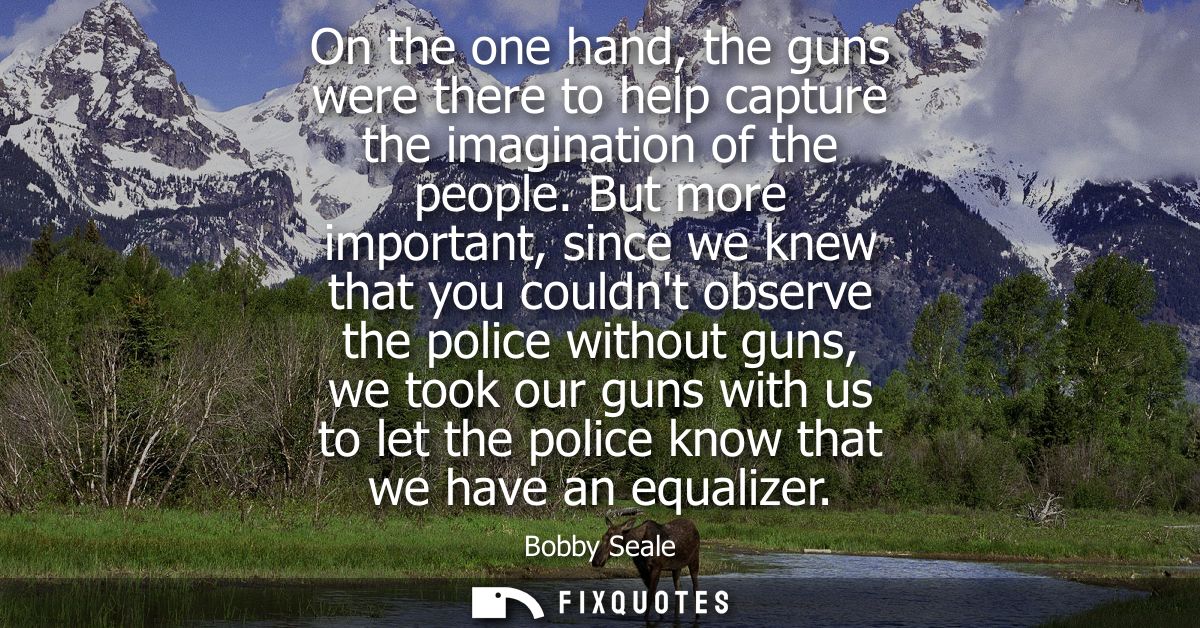"On the one hand, the guns were there to help capture the imagination of the people. But more important, since we knew that you couldn't observe the police without guns, we took our guns with us to let the police know that we have an equalizer"
About this Quote
Bobby Seale articulates how firearms became both a symbol and a tool for the Black Panther Party’s strategy in the late 1960s. The guns, carried openly by Party members, served a dual purpose: engaging the consciousness of the public and directly countering the power imbalance represented by the police. The spectacle of armed Black men and women patrolling neighborhoods broke the norms of both activism and social expectation. For many, this image captured attention and triggered discussion about the oppressive circumstances confronting African Americans. It was a calculated visual intervention, a way to force people, especially outsiders, to acknowledge the reality of state violence and institutional racism.
Beyond capturing public imagination or serving as a mere shock tactic, Seale highlights that weapons functioned as a form of self-defense grounded in the right to bear arms. Black Panthers knew that passively observing police encounters often resulted in violence or harassment. By matching the police’s weaponry, Panthers declared themselves not as passive victims, but as participants demanding respect and equitable treatment. The phrase “we have an equalizer” reveals deep skepticism toward legal and social systems that ostensibly protected civil rights but, in practice, left marginalized communities vulnerable to police brutality.
The act of carrying guns wasn’t about endorsing violence, but asserting personhood and agency within a system designed to deny both. It created a new kind of standoff, insisting that the presence of Black bodies in public spaces mattered, and that those bodies would be defended when necessary. The Panthers’ approach challenged not just the specific abuses of police, but broader narratives about who had the right to public space, defense, and dignity. Seale’s remarks capture this nuance, a calculated blend of symbolism, strategy, and deep-rooted skepticism about American justice as experienced by the oppressed.
More details
About the Author

